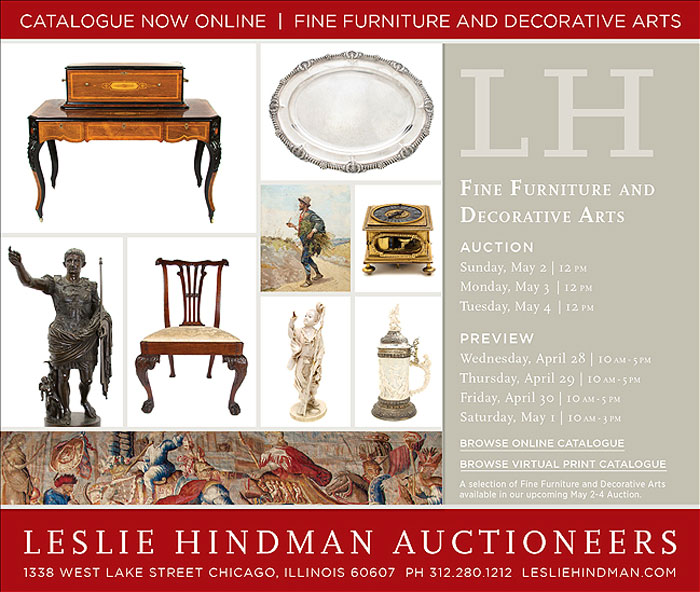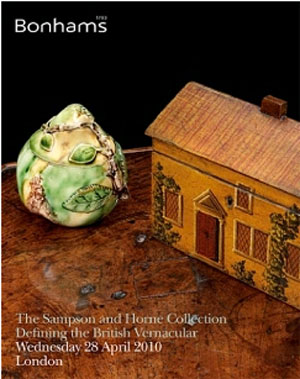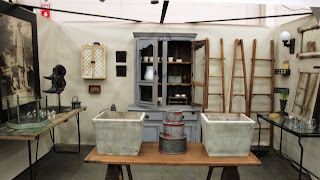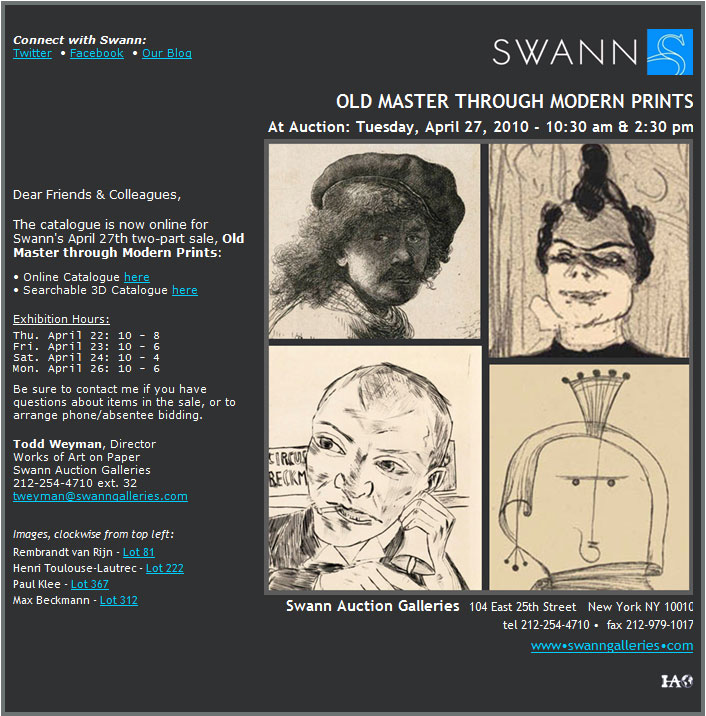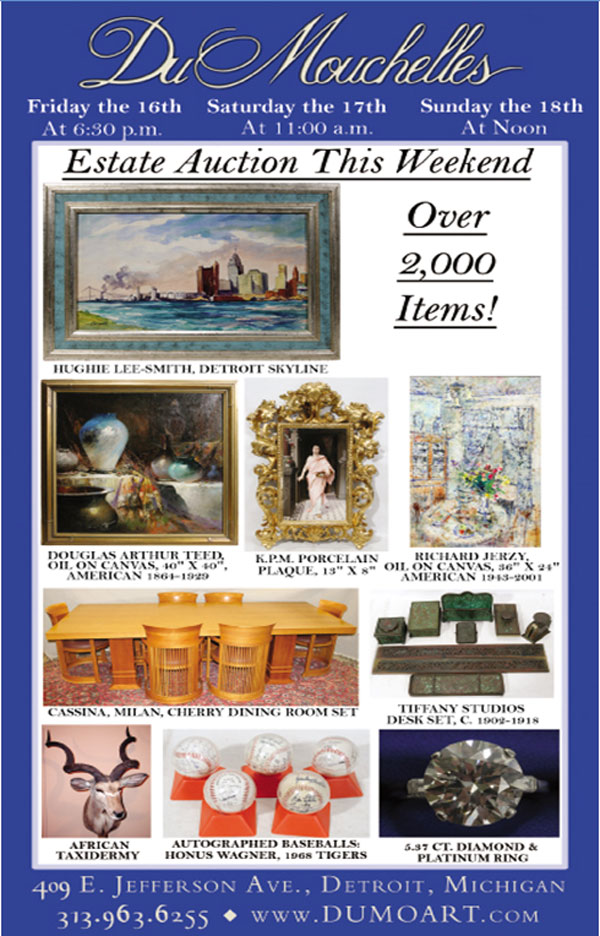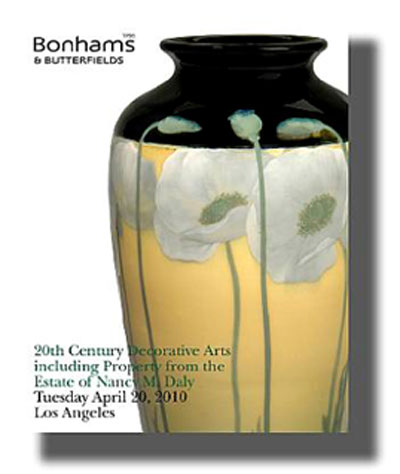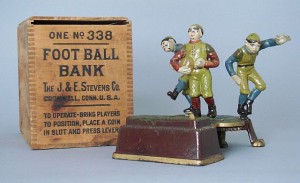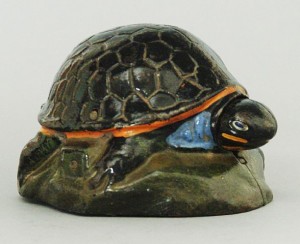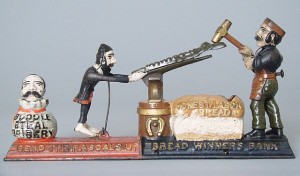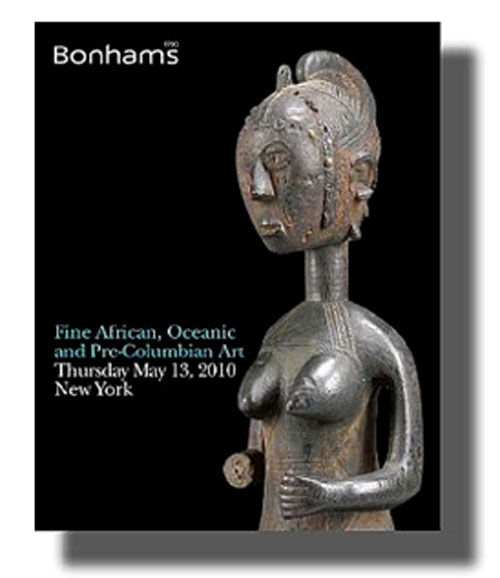Articles by admin
Dazzling diamonds, designer jewels and famous names highlight Heritage May Jewelry auction
Monday, April 19th, 2010Selections from The Dorothy & Sidney Factor Collection; also Cipullo, Cartier, Tiffany, Harry Winston, Van Cleef & Arpels and more, May 3 in Dallas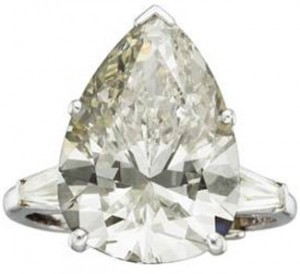
DALLAS, TX — A fantastic collection of jewels by some of the most prolific and highly sought after jewelers and jewelry firms on the planet will have the eyes of collectors of brilliant gems and precious metals firmly fixed on Dallas on Monday, May 3, when Heritage Auction Galleries presents its Signature® Fine Jewelry Auction live at the company’s Dallas Design District showroom, 1518 Slocum Street, and online at HA.com.
“The selections in this auction run from the Venerable – names like Cartier, Tiffany, Van Cleef & Arpels and Harry Winston,” said Jill Burgum, Director of Jewelry Auctions at Heritage, “to the artistic and contemporary, with names like Aldo Cipullo, David Webb, Marco Bicego and Donna Vock constituting just a few of the designers in the sale.”
Above all, however, what stands out in this auction are the diamonds with a dazzling array awaiting erudite bidders. The first among equals is the gorgeous pear-shaped 13.75 carat Diamond and Platinum Ring from the Dorothy & Sidney Factor Collection, being sold by the famous Beverly Hills family to benefit charity. It is estimated at $125,000-$175,000.
“You’ll be hard pressed to find a more elegant or eye-catching diamond,” said Burgum. “It was a gift from Sidney to Dorothy during the latter part of their legendary marriage, and has always been one of Dorothy’s favorite pieces. She’s parting with it now to let someone else enjoy its magnificence, as well as to act as a fundraiser for the family’s favorite charities.”
Another Diamond, Platinum Ring, this one from Tiffany & Co., featuring s 5.60 carat Lucida™-cut diamond, is also expected to turn heads. The Lucida™-cut from Tiffany is one of the company’s most popular cuts, introduced in 1999, and was the result of decades of development by the famed company. The elegant cut features elements of the Asscher and antique cushion-cuts melded into what is considered a more contemporary diamond cut. It features a modified square cut with truncated corners, a high step-cut crown, a small table and brilliant faceted pavilion – making for 50 total facets. It is estimated at $100,000-$125,000.
Also of considerable note to collectors is a Fancy Colored Diamond, Diamond, White Gold Ring featuring a Grayish Yellowish Green oval-shaped diamond weighing 7.84 carats, enhanced by round brilliant-cut diamonds weighing a total of approximately 3.00 carats, set in 18k white gold. It is estimated at $75,000 – $100,000.
A Fancy Green Diamond, Pink Diamond, Platinum, Gold Ring from designer David Alan, featuring a natural Grayish Yellowish Green radiant-cut diamond weighing 5.55 carats, estimated at $60,000-$80,000, is expected to bring some competitive bidding, while a simple yet stunning Diamond, Platinum Ring, weighing 4.07 carats, flanked by baguette-cut diamonds and set in platinum, is expected to bring $40,000-$50,000.
Of particular note in the designer jewelry selections is a grouping of four gorgeous and colorful designs from legendary Cartier designer Aldo Cipullo, one of the only craftsmen that Cartier let sign his pieces while he was in their employ.
“Cipullo invented the LOVE bracelet, which is just as popular today as it was 30 some years ago,” said Burgum. “His designs are timeless. Owning a Cipullo piece is an art experience.”
Roman-born Aldo Cipullo, the son of a prominent Italian jeweler, immigrated to New York in 1959 at age 23, where he studied at Manhattan’s famed School of Visual Arts. It was while working for David Webb, Tiffany and Cartier that he showcased his talent for innovative design. Cipullo’s passion for modern living influenced his pure, clean designs. The mass appeal of his designs was evident in the tremendous interest expressed in both the press and the public, as well as by socialites and celebrities alike. Some of his most well-known clients included Sophia Loren, Liza Minnelli, Elizabeth Taylor, and the Duchess of Windsor, as well as Pierre Cardin, Frank Sinatra and Richard Burton.
“In 1974, the same year he opened his own business – Aldo Cipullo, Ltd. – he won the prestigious Coty Award for his pioneering influence on the design of men’s jewelry,” said Burgum. “Ten years later, on February 2, 1984, Cipullo died much too early, at age 48, in New York City.”
Further highlights include, but are not limited to:
Bvlgari Fancy Yellow Diamond, Platinum, Gold Ring: Featuring two Fancy Yellow triangular-shaped diamonds, one weighing 2.12 carats together with one weighing 1.64 carats, flush set in platinum and 18k yellow gold, accompanied by its original signed box. Marked Bvlgari. Estimate: $35,000 – $45,000.
Diamond, Platinum Ring: Featuring a cushion-shaped diamond weighing approximately 4.45 carats, flanked by cut-cornered shield-cut diamonds, set in platinum. Estimate: $30,000 – $40,000.
Diamond, Platinum Ring: Featuring a round brilliant-cut diamond weighing 4.07 carats, enhanced by baguette and square-cut diamonds, set in platinum. Total diamond weight is approximately 5.65 carats. Estimate: $30,000 – $40,000.
Diamond, Platinum, White Gold Necklace: Featuring a kite-shaped diamond weighing 4.05 carats, enhanced by a full-cut diamond weighing approximately 0.45 carat, set in platinum, suspended by 18k white gold chain. Estimate: $30,000 – $40,000.
Diamond, Platinum Bracelet: From the Dorothy & Sidney Factor Collection. The bracelet features 38 pear-shaped diamonds of varying weights, enhanced by baguette-cut diamonds, set in platinum. Total diamond weight for the bracelet is approximately 32.50 carats. Estimate: $25,000 – $50,000.
Heritage Auctions, headed by Steve Ivy, Jim Halperin and Greg Rohan, is the world’s third largest auction house, with annual sales more than $600 million, and 500,000+ registered online bidder members. For more information about Heritage Auctions, and to join and gain access to a complete record of prices realized, along with full-color, enlargeable photos of each lot, please visit HA.com.
Bonhams – London – The Sampson and Horne Collection
Monday, April 19th, 2010Keeping you appraised of an antiques and design show you just can’t miss!
Sunday, April 18th, 2010The countdown is on!
Val: Can you tell us about the most unusual item brought to you at an event?
Linda: Sure! I was examining items in a home for an estate tax appraisal. I was crawling around a small storage area and found a few old paintings. One in particular was interesting to me because I recognized the artist immediately, even though it was in terrible condition. I discussed the painting with my client and told him it was painted by one of the “Philadelphia Ten” by the name of Fern Coppedge. Fern was an American artist who lived from 1883 through 1951. I was able to broker the painting and it sold for $250,000! The client was very happy and told me that if I were not there he would have sold the painting for $25 at a house sale!
Getting right to the point with spiky Steiff hedgehogs
Sunday, April 18th, 2010Steiffgal does not want to hog your valuable time on this lovely spring day, so she’ll keep this post short and sweet (much like the charming item under discussion today!) Let’s get right to the point with this question from a reader who asks about her spiky Steiff hedgehog friend! Eryka writes…
“Hi,
I have a query about a little hedgehog that I got for Christmas from my dad, who knows that I love hedgehogs.
From the tip of his black nose (some sort of plastic ball) to his furry rear end he is about 6 inches. He has two felt front paws, two circular felt ears, and little round black eyes. He has a Steiff button and tag in one of his paws and it says: original Steiff 1670/10 Made in Austria Preis- Price. On the back of the tag it says that he is made from cotton and wool and the number is PA 55 MASS 73. He has airbrushed dark brown lines on his face, and his fur is mainly made up of long, stiff fibers which are light tan at the tips and darker brown near his body. His belly is flat.
What can you tell me about his make and the time period when he was produced? I have attached some photos for you.
Thanks!”
Let’s shine a little light on Eryka’s nocturnal buddy. What you have here is what Steiff calls Joggi Igel or Joggi Hedgehog. He is made from spiky “tipped” (meaning that the fiber ends are dyed a different color than the entire length of the fiber) mohair, in a lying position, and has a flat bottom. His sweet tiny face, ears, paws, and underside are made from grey felt. This particular Joggi was made in 6, 10, and 17 cm from 1966 through 2002. Eryka’s Joggi, number 1670/10, dates him in the 1968 to 1985 production period.
Today, hedgehogs are quite prolific in the Steiff line – but that was not always the case. The first hedgehog, as far as Steiffgal can tell, appeared in the Steiff catalog in 1951. Also named Joggi, this standing hedgehog was 12 cm tall and made from mohair from 1951 through 1977, and then mohair and dralon from 1978 through 1985. In 1961, a very similar 12 cm standing hedgehog design was produced; he was manufactured through 1966. Since the 1960’s, hedgehogs in all shapes, sizes, and materials have made regular appearances in the Steiff catalog, appearing as play toys, collector’s editions, woolen miniatures, puppets, wooden pull toys, a purse, and even a golf club cover! The current Steiff line features a tiny Steiff hedgehog keyring, which has the charming looks of the Eryka’s vintage Joggi.
 And just why do hedgehogs seem to all of a sudden to be in the Steiff spotlight in from the early 1950’s onward? Steiffgal has a two word theory on this: Mecki and Micki. This beloved and well known (at least in Europe) hedgehog cartoon couple was first designed in Germany in 1940 by the artist Ferdinand Diehl. They became much more famous in the early 1950’s with their regular appearance on the German TV magazine HORZU. The Diehl Film company from Munich granted Steiff the licensing rights to produce the dolls in 1951, and they have been a mainstay in the line to this day. Both Mecki and Micki have been produced in 17, 28, and 50 cm from 1952 onward; a 100 cm Mecki was produced in 1967, perhaps as a special window display. The spiky tipped mohair that has been used for Mecki and Micki’s hair over the years hasn’t changed, and is almost identical to the spiked mohair used on most other mohair Steiff hedgehogs, even today.
And just why do hedgehogs seem to all of a sudden to be in the Steiff spotlight in from the early 1950’s onward? Steiffgal has a two word theory on this: Mecki and Micki. This beloved and well known (at least in Europe) hedgehog cartoon couple was first designed in Germany in 1940 by the artist Ferdinand Diehl. They became much more famous in the early 1950’s with their regular appearance on the German TV magazine HORZU. The Diehl Film company from Munich granted Steiff the licensing rights to produce the dolls in 1951, and they have been a mainstay in the line to this day. Both Mecki and Micki have been produced in 17, 28, and 50 cm from 1952 onward; a 100 cm Mecki was produced in 1967, perhaps as a special window display. The spiky tipped mohair that has been used for Mecki and Micki’s hair over the years hasn’t changed, and is almost identical to the spiked mohair used on most other mohair Steiff hedgehogs, even today.
Steiffgal hopes this quick review of the history of Steiff hedgehogs has “tipped” you off to a new area of collecting!
Have a question about one of your Steiff treasures, nocturnal or otherwise? Let’s talk! Click here to learn more.
Swann Auction Galleries – Old Master Through Modern Prints – April 27th, 2010
Friday, April 16th, 2010Du Mouchelles April Auction – Detroit, MI
Friday, April 16th, 2010Bohnams & Butterfields – Los Angeles Preview – April 20th, 2010
Friday, April 16th, 2010Reyne Gauge – Bankable Antiques – by: Reyne Haines
Friday, April 16th, 2010As children, we rarely gave thought to caring for our toys. They were made purely for our entertainment, and not to be dusted and kept on the shelf.
I had my share of Barbie’s who’s hair was cut, colored with a magic marker, and occassionally chewed on by the dog.
My brother could tell you all about flipping baseball cards, creating racetracks for his Matchbox cars and the autographs he collected over the years being a serious sports fan.
Sometimes, when I see a toy I played with as a kid in an antique shop it makes me pause. I wonder, had I taken care of those Barbie’s – what would they be worth today? How many rookie cards did my brother bend, tear and flip that would add up to some serious coin now?
Gone are the days for the $6.00 Barbie. Now, they are designer inspired and can cost a few hundred dollars right off the shelf. How can you justify spending that price when you know they are going to take them out of the box, lose those “designer” shoes within the first week, and potentially get a fresh look by your daughter and a pair of scissors?
Will these toys increase in value over time if you buy them, and place them on the shelf only to be admired from afar?
I don’t have a magic 8 ball to answer that question, but recently I read a press release about a few toys that have increased, just a little, since originally sold.
If you are interested in recreating your youth (or perhaps the youth of your grandparents!) take a look at the upcoming toy auction at RSL Auctions on May 22nd:
The sale consists of 360 lots, which translates to, something for everyone.
A portion of the collection up for sale came from Richard Stevens, an avid mechanical bank collector. Stevens was known for buying only the best. The best meaning the rarest, and those in the best condition.
A few of the best items in the sale are:
J&E Stevens “Calamity” cast iron mechanical bank. This bank comes from the ex-Stephen Steckbeck collection. It still has it’s original box! Estimate: $60-90,000
A very rare circa 1930 Kilgore cast-iron Turtle bank. Formerly in the collections of Stan Sax and Gertrude Hegarty. Estimate: $50-70,000
Circa 1886 – J&E Stevens “Breadwinners” cast-iron mechanical bank in near mint condition. Estimate: $90-120,000
I would have to imagine when these were first produced, the cost was a few dollars (if that).
80-100 years later, their value has increased exponentially!
I find it a bit ironic. A toy created to help children save their money becomes more valuable than the coins placed in it.
Happy Hunting!
Reyne

